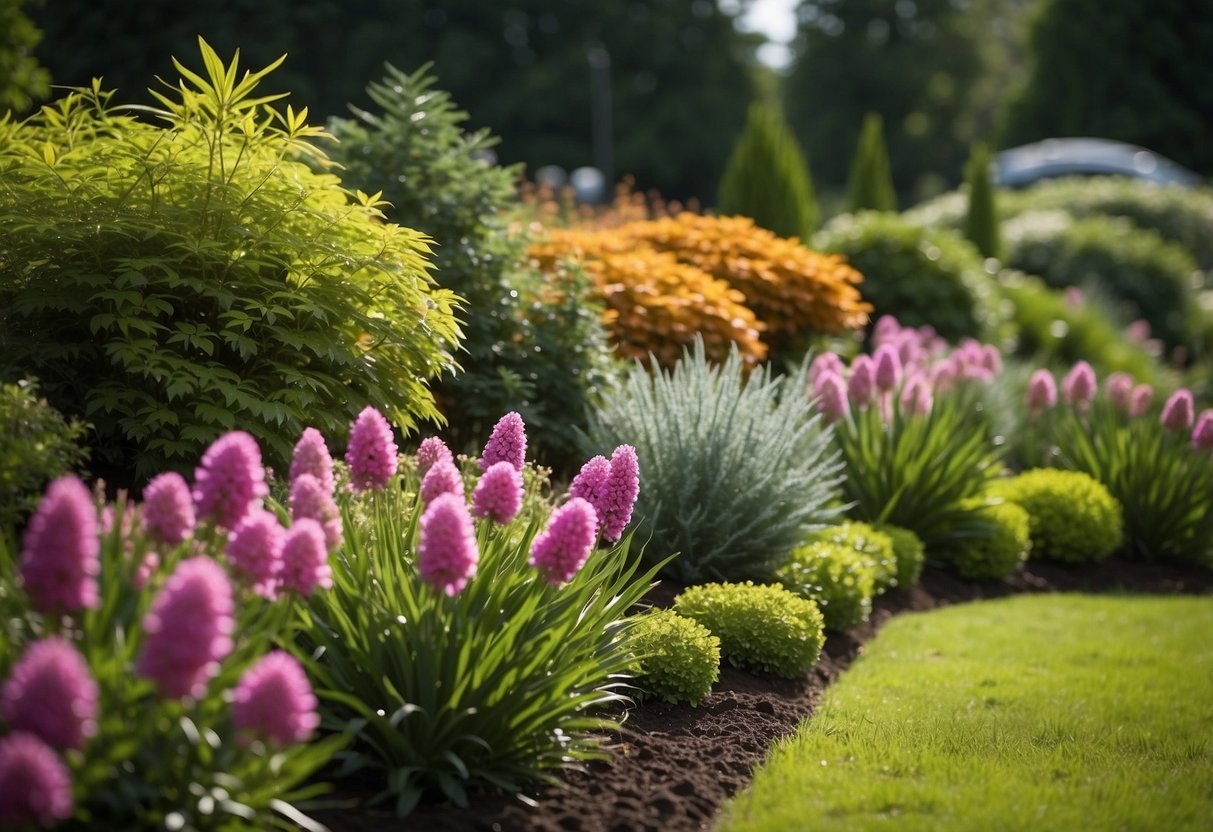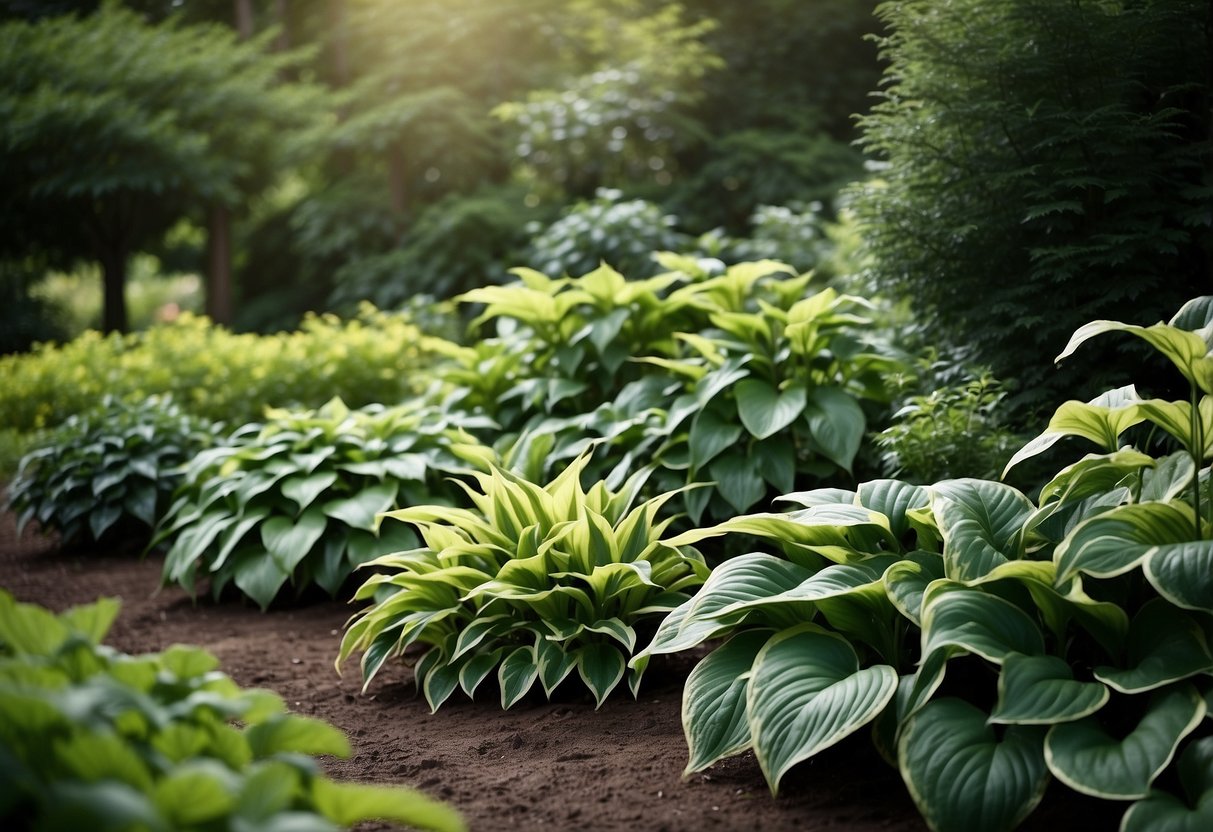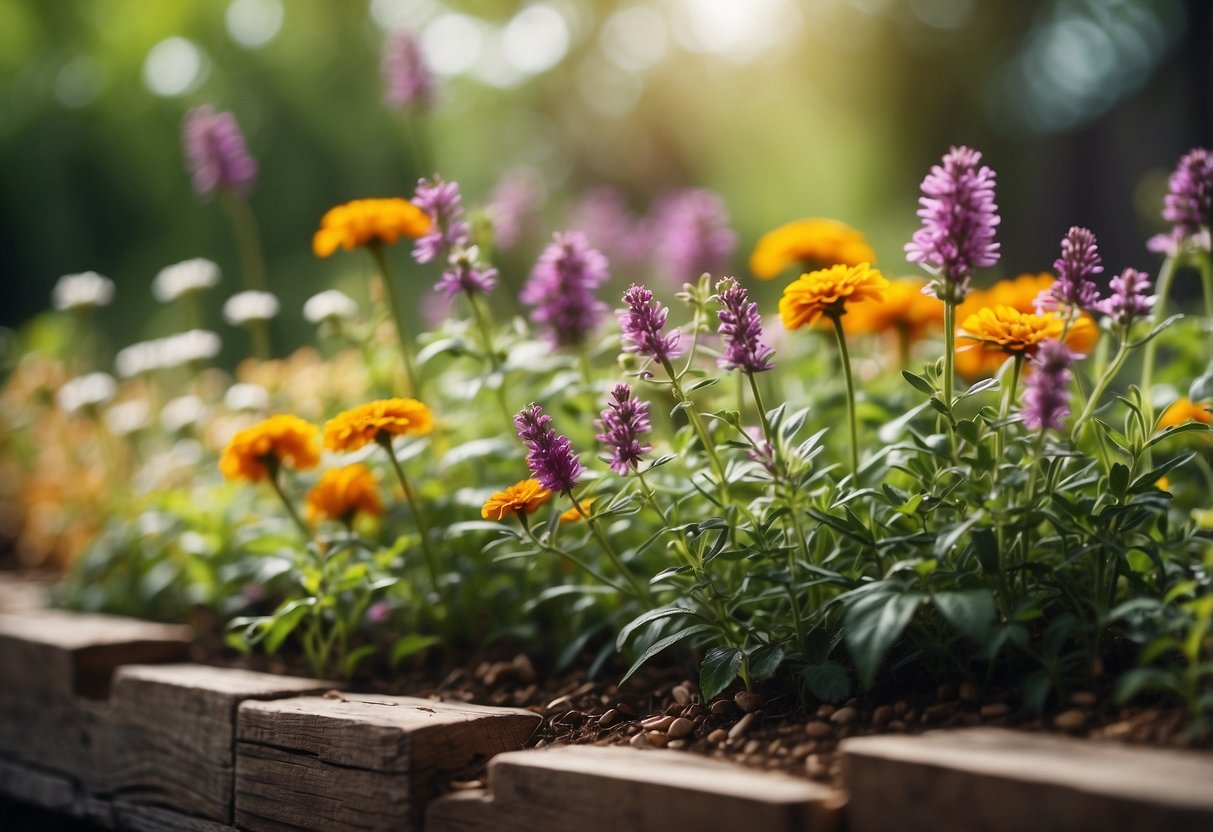Evergreen Garden Border Ideas: Enhance Your Yard with Timeless Beauty
Evergreen garden borders can add structure and beauty to your yard all year round. By choosing the right evergreen plants, you ensure that your garden looks vibrant even in the colder months. This makes them a popular choice for gardeners looking to maintain a picturesque landscape no matter the season.

How do you create a stunning evergreen garden border that stays lush and green all year? Whether you have small border areas or larger spaces to fill, using a mix of evergreen plants can provide the visual interest and low-maintenance appeal that your garden needs. From softening the edges of pathways to creating a backdrop for flowering plants, evergreens are versatile and resilient.
1) Lavender Edging

Using lavender for your garden border not only looks beautiful but also adds a pleasant aroma. English lavender, especially the ‘Hidcote’ variety, is a popular choice.
The deep purple flower spikes contrast nicely with the blue-green foliage, creating a charming and tidy edge. Lavender thrives in full sun and well-drained soil.
In addition to its beauty, lavender can deter pests and attract pollinators, making your garden both functional and lovely. Give it a try to transform your garden borders into a fragrant and colorful display.
2) Boxwood Hedges

Boxwood hedges are a popular choice for creating neat and stylish garden borders. Their evergreen nature ensures your garden looks lively throughout the year.
These hedges can be easily pruned into various shapes. This makes them perfect for formal garden designs. You can also use boxwoods to frame pathways or highlight garden features.
Besides, boxwood hedges are low-maintenance once established. They thrive in many climates, making them a versatile option for your garden.
3) Ornamental Grasses

Ornamental grasses can add a unique touch to your garden borders. They come in various heights, colors, and textures to suit any garden style.
You can choose from types like tufted hair grass, which has air-like plumes in beautiful shades. This grass loves moist habitats and has an attractive mounding habit.
Japanese blood grass is another great option. It features stunning red hues and grows well in full sun to part shade.
4) Hosta Varieties

Hostas are perfect for any garden, especially if you need something low-maintenance and beautiful. There are many varieties to choose from, each offering unique leaf colors and sizes.
You can try the smaller ‘Mouse Ears’ hosta, which has cute and tiny leaves. For a larger option, consider ‘Sagae’ with its big, impressive leaves.
Mixing different varieties like ‘Francee’ and ‘Golden Scepter’ can create a lovely contrast. Placing these thoughtfully can add depth and interest to your evergreen garden border.
5) English Ivy

English Ivy is a fantastic choice for your garden border. This evergreen plant is known for its dark green, glossy leaves, which often have white veins.
You can easily grow English Ivy along garden borders or fences. It’s also great for adding texture. With minimal care, it can climb up to 50 feet.
For the best results, plant English Ivy in well-draining soil. Regular watering helps, but be careful not to overwater. A balanced 20-20-20 fertilizer every few weeks from spring to summer can keep your ivy looking its best.
6) Stone Border

A stone border adds a timeless and natural look to your garden. Use flat and uniform stones to make stacking easier.
Natural fieldstones, flagstones, or large river rocks work well. They provide stability and blend seamlessly with your garden.
A stone border is durable and requires little maintenance. It enhances your garden’s visual appeal while defining its boundaries.
For more tips, check out these stacked stone garden border methods.
7) Herb Garden Border

Creating a herb garden border is a great way to add beauty and functionality to your garden.
You can plant a variety of herbs like thyme, rosemary, and lavender along the edge of your flower beds. These herbs not only look lovely but also offer fresh flavors for cooking.
Thyme is an excellent choice because it’s evergreen and comes in different types. Common thyme, lemon thyme, and Thymus ‘Silver Posie’ are popular options.
For more ideas on using herbs to edge your garden, you can check out this article on evergreen herbs for borders.
8) Perennial Flowers

Adding perennial flowers to your garden border keeps it lively year after year. Great choices for autumn color include chrysanthemums and snapdragons. These flowers not only brighten your garden but also add a touch of seasonal charm.
Consider plants with unique foliage like Japanese maples and ferns. They provide beautiful colors and textures throughout the seasons. For vibrant borders, include perennials like hydrangeas and heuchera. They thrive in various conditions and offer long-lasting blooms.
Mixing different perennials can create a lush and diverse garden border.
9) Succulent Garden

A succulent garden is a fantastic and low-maintenance option for your evergreen garden border. These plants are known for their ability to store water, making them resilient during dry spells.
You can choose from a variety of shapes, sizes, and colors, giving your garden a unique look. Adding succulents like the Coppertone Stonecrop can provide striking color contrasts.
Planting succulents in your border can create a visually appealing and textured landscape. They thrive in sunny spots and require minimal watering, making them perfect for busy gardeners.
10) Rosy Companion Plants

When planning your evergreen garden border, adding roses can create a stunning effect. Pairing roses with the right companion plants ensures a balanced and vibrant look.
Consider planting alyssum alongside your roses. Its low-growing nature and soft-colored flowers make a perfect match.
Another great choice is verbena. With its bright flowers, verbena helps cover the lower branches of rose bushes.
For a touch of foliage, lamb’s ear is a good option. Its velvety, silver-gray leaves add texture to your garden.
Design Principles for Evergreen Garden Borders

Evergreen garden borders provide year-round color, texture, and interest. Key principles include balancing color and texture, choosing the right plants, and adding visual appeal.
Balancing Color and Texture
Balancing color and texture is essential in creating an engaging garden border. Evergreens come in various shades of green, from deep forest to light lime. Mix different greens to avoid a monotonous look. Include plants with different foliage textures, such as broad leaves and needle-like leaves.
Combining different textures adds depth and visual interest. For example, try pairing soft pines with the more rigid leaves of boxwood. This contrast can make the border visually appealing. Also, consider seasonal color changes in some evergreens, such as golden hues in winter, to keep your border lively throughout the year.
Optimal Plant Choices
Choosing the right plants ensures your evergreen border thrives. Select evergreens suited to your climate and soil. Thuja and juniper are great for colder climates, while boxwood prefers milder weather. Hollies can adapt to various conditions with their striking green foliage and bright red berries.
Consider growth habits and sizes. Small evergreens like dwarf cedar are perfect for small borders, while larger plants like yew create a bold statement. Think about maintenance needs too; opt for low-maintenance evergreens if you prefer minimal upkeep.
Creating Visual Interest
To create visual interest, think about the height variation in your border. Taller plants like arborvitaes at the back, medium-height shrubs in the middle, and shorter plants like heathers in the front create a tiered effect. This layering helps to add depth.
Additionally, mix flowering evergreens like rhododendrons with those that have berries, such as firethorn. Flowering evergreen plants not only provide beautiful blooms but also attract pollinators to your garden. Meanwhile, berry-producing plants add color and attract birds, enhancing the garden’s ecosystem.
Including structural elements like small garden statues, rocks, or even a trellis can break the monotony and add points of interest. The combination of plants and decorations makes your evergreen garden border truly unique.
Maintenance Tips for Evergreen Borders

Maintaining evergreen garden borders involves taking care of them during different seasons, pruning them properly, and dealing with pests. Here are some practical tips to help keep your evergreen borders healthy and beautiful.
Seasonal Care
Providing seasonal care for your evergreen borders is crucial. During spring, ensure trees and shrubs get plenty of water as new growth starts. In the summer, mulch helps retain moisture and keeps roots cool. Apply a layer of mulch around plants, being careful not to cover the stems directly.
In autumn, deal with falling leaves and check for any signs of disease or damage. Winter preparation includes watering them deeply before the first frost and protecting young plants from extreme cold using burlap or frost cloth. Remember, good seasonal care makes your evergreens thrive all year round.
Pruning and Shaping
Pruning and shaping evergreen borders keep them in good condition. Prune your plants in late spring or early summer when the growth is in full swing. Start by removing dead or diseased branches using clean and sharp tools. This helps in promoting healthy growth and allows more light to penetrate the foliage.
Shaping your evergreens is about managing their natural form. Trim the outer branches to maintain the desired size and shape. Be careful not to cut too much, as over-pruning can damage the plant and slow its growth. Regular, gentle shaping throughout the growing season is more effective than heavy pruning done all at once.
Dealing with Pests
Managing pests is essential to maintaining healthy evergreen borders. Common pests like aphids, spider mites, and scale insects can harm your plants. Inspect your evergreens regularly for signs of pest infestations, such as discolored leaves or webbing.
Natural predators like ladybugs can help control pest populations. You can also use insecticidal soap or neem oil as safe treatments. Apply these in early morning or late evening to prevent leaf burn. If you’re dealing with a severe infestation, consider consulting a professional for advice and solutions tailored to your specific situation. Keeping pests in check will ensure your evergreens stay lush and vibrant.







